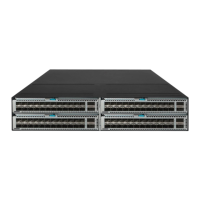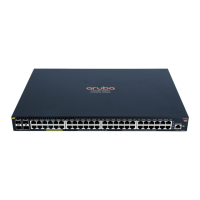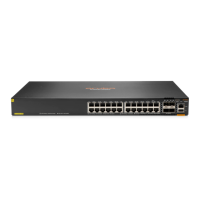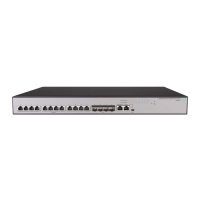87
string remote-id: Specifies the string mode that uses a case-sensitive string of 1 to 63 characters as
the content of the Remote ID sub-option.
sysname: Specifies the sysname mode that uses the device name as the content of the Remote ID
sub-option. You can set the device name by using the sysname command.
Usage guidelines
The padding format for the specified character string (string) or the device name (sysname) is
always ASCII. The padding format for the normal mode is determined by the command.
If you execute this command multiple times, the most recent configuration takes effect.
Examples
# Specify the padding content for the Remote ID sub-option of Option 82 as device001.
<Sysname> system-view
[Sysname] interface vlan-interface 10
[Sysname-Vlan-interface10] dhcp relay information enable
[Sysname-Vlan-interface10] dhcp relay information strategy replace
[Sysname-Vlan-interface10] dhcp relay information remote-id string device001
Related commands
dhcp relay information enable
dhcp relay information strategy
display dhcp relay information
dhcp relay information strategy
Use dhcp relay information strategy to configure the strategy for the DHCP relay agent to handle
messages containing Option 82.
Use undo dhcp relay information strategy to restore the default handling strategy.
Syntax
dhcp relay information strategy { drop | keep | replace }
undo dhcp relay information strategy
Default
The handling strategy for messages that contain Option 82 is replace.
Views
Interface view
Predefined user roles
network-admin
Parameters
drop: Drops DHCP messages that contain Option 82 messages.
keep: Keeps the original Option 82 intact and forwards the DHCP messages.
replace: Replaces the original Option 82 with the configured Option 82 before forwarding the DHCP
messages.
Usage guidelines
This command takes effect only on DHCP requests that contain Option 82.

